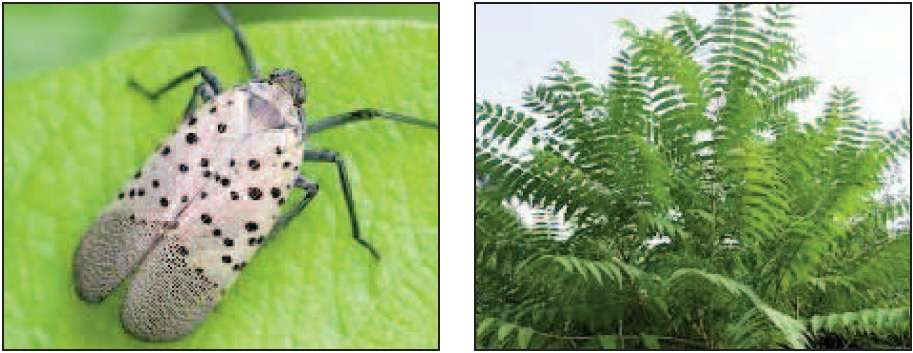SCORES & OUTDOORS: What to do about the spotted lanternfly once it arrives in Maine
 by Roland D. Hallee
by Roland D. Hallee
Just the other day, my wife showed me a Facebook post warning us about the Spotted Lanternfly, and a clear message to kill it upon sight. So, my curiousity being what it is, I had to find out, first, what it is, and second, how to eliminate it if that is what we’re supposed to do.
The Spotted Lanternfly is an invasive species native to Asia. In 2014 it was found in Pennsylvania, and has since spread to multiple counties and states which are now quarantined.
Kill it! Squash it, smash it…just get rid of it. In the fall, these bugs will lay egg masses with 30-50 eggs each. These are called bad bugs for a reason, don’t let them take over your county next.
The spotted lanternfly causes serious damage including oozing sap, wilting, leaf curling and dieback in trees, vines, crops and many other types of plants. In addition to plant damage, when spotted lanternflies feed, they excrete a sugary substance, called honeydew, that encourages the growth of black sooty mold. This mold is harmless to people however it causes damage to plants. In counties infested and quarantined for spotted lanternfly, residents report hundreds of these bad bugs that affect their quality of life and ability to enjoy the outdoors during the spring and summer months. Spotted lanternflies will cover trees, swarm in the air, and their honeydew can coat decks and play equipment.
In addition to damaging trees and affecting quality of life, the spotted lanternfly is a huge threat to agriculture industry. The economic impact could total in the hundreds of millions of dollars and hundreds of thousands of jobs for those in the grapes, apple, hops, and hardwood industries.
The spotted lanternfly adult is approximately 1 inch long and 1/2 inch wide at rest. The forewing is grey with black spots and the wings tips are reticulated black blocks outlined in grey. The hind wings have contrasting patches of red and black with a white band. The legs and head are black; the abdomen is yellow with broad black bands. Immature stages are black with white spots, and develop red patches as they grow.
While there is no active infestation of the spotted lanternfly in Maine, spotted lanternfly eggs were discovered in the Pine Tree State in 2020. Spotted lanternfly has also been seen in neighboring New Hampshire.
If you think you see any of the life stages of the spotted lanternfly, please report it to Bugwatch@maine.gov. Photos and/or specimens are required for identification and confirmation.
The Spotted Lanternfly, Lycorma delicatula, is a large planthopper native to China. It was first discovered in the United States in 2014 in southeastern Pennsylvania. SLF feeds on a wide range of host plants, including apple, grape, hops and many ornamental trees. Efforts to eradicate and quarantine spotted lanternfly have slowed its spread, but it has succesfully been able to establish in many additional states.
The Spotted Lanternfly prefers to feed on the invasive tree, Ailanthus altissima or tree-of-heaven. The geographical distribution of this tree in Maine is not fully known. Because of the strong association between spotted lanternfly and tree-of-heaven, the state is asking people to report sightings of tree-of-heaven also. Tree-of-heaven looks much like sumac.
Roland’s trivia question of the week:
Have any Boston Red Sox pitchers’ numbers been retired?
Responsible journalism is hard work!
It is also expensive!
If you enjoy reading The Town Line and the good news we bring you each week, would you consider a donation to help us continue the work we’re doing?
The Town Line is a 501(c)(3) nonprofit private foundation, and all donations are tax deductible under the Internal Revenue Service code.
To help, please visit our online donation page or mail a check payable to The Town Line, PO Box 89, South China, ME 04358. Your contribution is appreciated!



Leave a Reply
Want to join the discussion?Feel free to contribute!